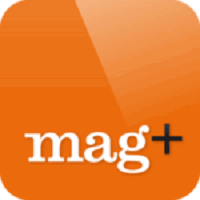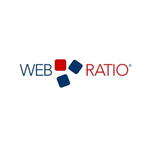Description

Appsme

Mag+ Application Development

WebRatio
Comprehensive Overview: Appsme vs Mag+ Application Development vs WebRatio
Let's take a comprehensive look at Appsme, Mag+ Application Development, and WebRatio, focusing on their primary functions, target markets, market share, user base, and key differentiating factors.
Appsme
a) Primary Functions and Target Markets:
- Primary Functions: Appsme was a platform that allowed small businesses to create and manage their mobile apps without extensive coding knowledge. The platform offered features such as push notifications, loyalty programs, and social media integration, aiming to enhance customer engagement and provide analytics on app usage.
- Target Markets: Appsme primarily targeted small to medium-sized enterprises (SMEs) looking to establish a mobile presence without investing heavily in bespoke app development. This included businesses in retail, hospitality, and service industries.
b) Market Share and User Base:
- Market Share and User Base: Appsme was a relatively small player in the broader app development landscape, focusing on niche markets such as small local businesses. It didn't command a large market share when compared to more extensive app development platforms aimed at larger enterprises.
c) Key Differentiating Factors:
- Ease of Use: Appsme differentiated itself with its user-friendly interface designed for non-technical users.
- Customization for Small Business Needs: The platform offered templates and features specifically catering to small businesses, making it straightforward for them to create functional apps quickly.
Mag+ Application Development
a) Primary Functions and Target Markets:
- Primary Functions: Mag+ specializes in digital publishing and content management, predominantly for creating interactive digital publications. The platform offers tools for designing and distributing content through apps, with interactive features that enhance digital publications.
- Target Markets: Mag+ targets publishers, media companies, and enterprises looking to leverage interactive content in their digital newsletters, magazines, and corporate communications.
b) Market Share and User Base:
- Market Share and User Base: Mag+ has a recognized position in the digital publishing space, especially among content creators who focus on rich media. However, compared to more general app development platforms, its market is more specialized and thus has a smaller share.
c) Key Differentiating Factors:
- Focus on Digital Publishing: A sharp focus on interactive digital content sets Mag+ apart from general app development platforms.
- Creative Design Tools: Mag+ provides creative design capabilities that are particularly appealing to designers and publishers who require visually engaging content.
WebRatio
a) Primary Functions and Target Markets:
- Primary Functions: WebRatio offers a platform for rapid application development (RAD) for web and mobile applications. It is focused on Model-Driven Development (MDD), using visual tools to design user interfaces and workflows, which are then automatically translated into code.
- Target Markets: WebRatio targets enterprises needing complex, custom, and scalable business applications, such as banks, insurance companies, and large corporations that require rapid development cycles.
b) Market Share and User Base:
- Market Share and User Base: While not as mainstream globally as some app development platforms such as Microsoft’s Power Apps or Mendix, WebRatio has a strong presence in specific regions and industries that value MDD for enterprise application development.
c) Key Differentiating Factors:
- Model-Driven Development: The emphasis on MDD allows faster prototyping and deployment, which is a significant advantage for businesses needing a quick turnaround.
- Enterprise Focus and Scalability: WebRatio offers scalability and customization for complex enterprise applications, a feature that less complex app builders cannot provide.
Comparison Summary
- User Focus: Appsme targets small businesses with easy-to-use tools, Mag+ caters to digital publishers requiring rich media, and WebRatio serves enterprises with model-driven development for complex applications.
- Market Presence: Each has a niche focus, with WebRatio more aligned with enterprise needs, Mag+ with publishers, and Appsme with small business owners, impacting their market share accordingly.
- Differentiating Features: Ease of use characterizes Appsme, robust creative design tools define Mag+, and rapid, scalable development through MDD distinguishes WebRatio.
By understanding these key aspects, businesses can better align their needs with the appropriate platform for mobile and web app development.
Contact Info

Year founded :
2005
+44020-3744-1790
Not Available
United Kingdom
Not Available

Year founded :
Not Available
Not Available
Not Available
Not Available
Not Available

Year founded :
2001
+39 02 4548 5980
Not Available
Italy
http://www.linkedin.com/company/webratio
Feature Similarity Breakdown: Appsme, Mag+ Application Development, WebRatio
When comparing Appsme, Mag+ Application Development, and WebRatio, it's essential to analyze their core features, user interfaces, and any unique features that differentiate them. Here's a breakdown based on available information:
a) Core Features in Common
-
App Development Platforms:
- All three products provide platforms for users to develop applications, though with different focuses and strengths.
-
No-Code/Low-Code Capabilities:
- These platforms generally offer no-code or low-code development environments, which allows non-technical users to design and deploy apps without extensive coding knowledge.
-
Cross-Platform Compatibility:
- They typically support deployment across multiple platforms, such as iOS and Android, enabling users to reach a broader audience.
-
Drag-and-Drop Interface:
- A user-friendly, drag-and-drop interface is common to streamline the design process and make app development accessible to users with varying technical expertise.
-
Customization Options:
- Each platform provides various customization options to tailor the look and functionality of applications to meet specific user requirements.
-
Preview and Testing:
- Options to preview and test apps in real-time or in simulated environments are standard to ensure functionality before deployment.
-
Templates and Pre-Built Components:
- They offer a library of templates and pre-built components to accelerate the app development process.
b) User Interface Comparison
-
Appsme:
- Typically designed with simplicity in mind, Appsme’s interface is highly focused on being intuitive for user-friendly, straightforward app creation, catering primarily to business owners with limited technical skills.
-
Mag+ Application Development:
- Known for working with rich media and content-heavy applications, Mag+ offers a more design-focused interface aimed at publishers and marketers, with robust tools for handling multimedia content.
-
WebRatio:
- Its interface is more geared towards enterprise users, reflecting its focus on web and business process management applications. It offers a more complex and feature-rich UI that may cater to professional developers within a business setting.
c) Unique Features
-
Appsme:
- Primarily targets small to medium-sized businesses and offers unique features such as direct-to-consumer mobile solutions, easy updates, and a focus on creating business-focused apps like loyalty programs and booking systems.
-
Mag+ Application Development:
- Specializes in digital publishing and is distinguished by its extensive support for interactive and multimedia content, making it ideal for magazines, digital catalogs, and other content-rich applications.
-
WebRatio:
- Stands out with its focus on enterprise-grade applications and business process management. It offers advanced integration options, including support for BPMN and automated workflows, which appeal to larger organizations seeking to integrate and optimize business processes.
In summary, while there are shared features across these platforms, each one targets distinct user demographics and types of applications. Appsme is focused on small businesses, Mag+ is tailored for digital publishing, and WebRatio caters to enterprise applications with a particular emphasis on business processes and integration.
Features

Comprehensive Features
Integration Capabilities
Customer Support
User-Friendly Design
Security and Reliability

User Interface Design
Content Management
Performance Optimization

User Experience
Integration Capabilities
Deployment & Maintenance
Application Development
Best Fit Use Cases: Appsme, Mag+ Application Development, WebRatio
Here's a detailed analysis of the best fit use cases for Appsme, Mag+ Application Development, and WebRatio:
a) Appsme
Best for:
- Small to Medium-Sized Businesses (SMBs): Appsme is ideal for small business owners looking to create mobile apps (typically for Android and iOS) without significant resources or technical expertise.
- Retail and Hospitality Industries: Especially beneficial for retail shops and restaurants needing mobile apps to enhance customer engagement, loyalty programs, notifications, and reservations.
- Local Services: Businesses like salons, gyms, or repair services can use Appsme to promote their services, streamline booking processes, or provide announcements to customers.
Scenarios:
- Businesses seeking a straightforward, drag-and-drop mobile app creation tool.
- Companies that need cost-effective solutions with quick deployment and minimal maintenance.
b) Mag+ Application Development
Best for:
- Publishing Industry: Mag+ is particularly suited for digital magazines, catalogs, and interactive publications, allowing companies to offer a rich multimedia experience.
- Marketing Agencies: Agencies can use Mag+ to create engaging and interactive marketing materials or branded content apps for clients.
- Creative and Design Focused Projects: Projects focused on high-quality visuals and interactivity, like art books or portfolios.
Scenarios:
- When the project requires a heavy focus on interactive content delivery and visual fidelity.
- For businesses that need to frequently update content and want a platform that smoothly integrates design changes.
c) WebRatio
Best for:
- Enterprise and B2B Applications: WebRatio excels in complex enterprise-level applications, often where business process automation is vital.
- Developers Seeking Low-Code/No-Code Platforms: Businesses looking to accelerate development cycles through a low-code approach can benefit from WebRatio's capabilities.
- Industries with Complex Workflows: Sectors like finance, manufacturing, or logistics, where internal applications require intricate business logic and integration with other enterprise systems.
Scenarios:
- Projects demanding a strong focus on automating and integrating diverse business processes.
- Enterprises looking to digitize operations rapidly without deep coding expertise.
d) Catering to Different Industry Verticals or Company Sizes
- Appsme effectively services small to medium enterprises across industries like retail and local services by providing straightforward and budget-friendly mobile app solutions.
- Mag+ is geared towards industries where content interactivity and design are paramount, including publishing, media, and marketing, catering from boutique agencies to large publishing houses.
- WebRatio serves larger enterprises or industries that need complex application structures, providing robust tools to create scalable business solutions across sectors like manufacturing, supply chain, and finance.
Each product has its niche, targeting specific industry requirements, company sizes, and project scales, allowing businesses to choose tools aligned with their strategic objectives and technical capabilities.
Pricing

Pricing Not Available

Pricing Not Available

Pricing Not Available
Metrics History
Metrics History
Comparing teamSize across companies
Conclusion & Final Verdict: Appsme vs Mag+ Application Development vs WebRatio
To provide a conclusion and final verdict for Appsme, Mag+ Application Development, and WebRatio, we need to consider their unique offerings, strengths, and potential shortcomings. Here's a comprehensive evaluation:
Conclusion
a) Best Overall Value
- WebRatio is likely to offer the best overall value. This conclusion is based on its comprehensive feature set, flexibility, and support for a broad range of applications, making it suitable for diverse business needs. It excels in enterprise-grade applications with complex workflows, surpassing the other two in terms of scalability and integration capabilities.
b) Pros and Cons
-
Appsme
- Pros:
- Ease of Use: Designed for simplicity and accessibility, making it ideal for small businesses.
- Quick Deployment: Allows for rapid app development and launch.
- Cost-Effective: Typically offers a budget-friendly pricing structure suitable for small ventures.
- Cons:
- Limited Customization: May not provide the advanced features required by larger enterprises.
- Scale Limitations: Not ideal for businesses expecting to outgrow basic, straightforward app functionalities.
- Pros:
-
Mag+ Application Development
- Pros:
- Rich Media Integration: Excellent for creating media-rich applications, such as digital magazines and interactive content.
- User-Friendly Interface: Straightforward to use for creative professionals without deep technical expertise.
- Cons:
- Niche Focus: Primarily designed for digital publishing, limiting its applicability for other types of applications.
- Cost Considerations: Can be expensive for those outside the publishing industry or without a significant emphasis on media integration.
- Pros:
-
WebRatio
- Pros:
- Flexibility and Scalability: Supports complex and scalable enterprise applications with robust integration options.
- Rapid Development: Offers model-driven development facilitating fast iteration and deployment cycles.
- Enterprise Focus: Well-suited for industrial and large business solutions.
- Cons:
- Complexity: Can be overwhelming for small businesses with straightforward needs.
- Higher Learning Curve: Requires investment in training and familiarization, especially for non-technical users.
- Pros:
c) Recommendations
For users trying to decide between Appsme, Mag+ Application Development, and WebRatio, consider the following:
-
If you represent a small business looking for a quick, easy, and cost-effective solution, Appsme is a favorable choice. It provides a straightforward platform with essential features suited for simple, small-scale applications.
-
If your focus is on media-rich digital publications or interactive content, and you're in industries like publishing, then Mag+ Application Development becomes invaluable. Its specialized tools cater well to projects requiring heavy visual and interactive elements.
-
For larger enterprises or businesses with complex app development needs that require strong integration and scalability, WebRatio emerges as the best option. It suits environments needing robust enterprise solutions, where adaptability and long-term growth are key considerations.
In conclusion, align your choice with the specific requirements of your project, your growth expectations, and your budget constraints to ensure the best fit among these three platforms.